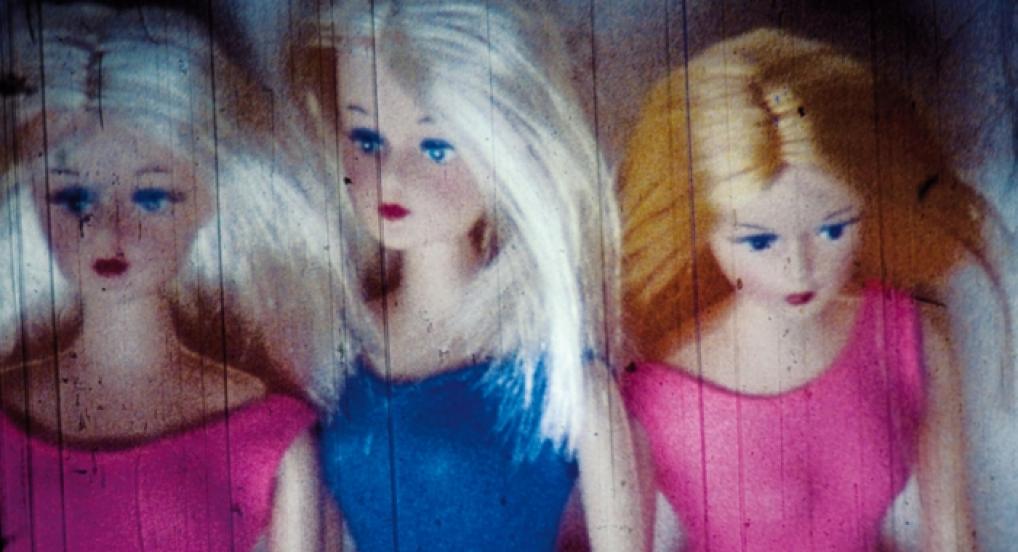
23 Barbie Dolls Tip Over (1988) by Dagie Brundert & Gesine Jochems
Thursday, May 16, 2024, 7:30 pm
Avant-Barb(ie)
presented by Microscope Gallery
Presented in Association with The Lab
Microscope Gallery Curators Elle Burchill & Andrea Monti and filmmaker Lucretia Knapp in person
Admission: $13 advance / $15 door / discounted for Cinematheque Members
Event tickets here
Microscope is a Manhattan-based art gallery founded in 2010 specializing in the works of risk-taking artists, emerging to established, whose practice includes moving image, sound, performance, photography and digital art. Microscope’s programming includes an ongoing series of weekly screenings, sound/music/performance events, readings and lectures as complement to its exhibitions, with the intention of bridging the gap between white cube exhibitions and the black box of the screening/performance space.
For tonight’s screening, Cinematheque is thrilled to welcome Microscope’s founders Elle Burchill and Andrea Monti to present Avant-Barb(ie). Curated in response to and dialog with Greta Gerwig’s Barbie (2023), Avant-Barb(ie) features 14 film/video works—spanning nearly 60 years—which address the perpetually renewing cultural impact of the iconic doll, works which interrogate, subvert and/or dismantle associated cultural stereotypes while presenting discourse on sexuality, gender and American culture at large, even while considering the act of playing with dolls as an enjoyable, social or empathic tool. Avant-Barb(ie) also asks: “Will Gerwig’s movie spur further Barbie-related investigations, or will it be more of a deterrent, for film and video art of the future?”
SCREENING:
Shut Up Barbie (1974) by Vincent Grenier; 16mm, 13 minutes
Barbie Dream House (2018) by Susan Kouguell; digital video, 5 minutes
I’ve Never Had an Asian Barbie (2020) by Jessy Jiao; digital video, 2 minutes
Meryl Fuckin Streep (2017) by Ava Bogle; digital video, color, sound, 5 minutes
Barbiemageddon (2023) by Penumbra Carter; digital video, 55 seconds
Invasion (2021) by Penumbra Carter; digital video, 35 seconds
Out and about with Barbie (2021) by Penumbra Carter; digital video, 48 seconds
Big Gurl (2006) by Lauren Kelley; digital video, 7 minutes
Barbie’s Audition (1995) by Joe Gibbons; pixelvision video screened as digital video, 9 minutes
Erotica (1989) by Lucretia Knapp; VHS screened as digital video, 3 minutes
Sally Cheesey Raffelyell (1992) by Lucretia Knapp; Hi-8 video screened as digital video, 5 minutes
PRISM Break Barbie (2013) by Addie Wagenknecht; digital video, 1 minute
Hello Barbie: The First Dispatch (2020) by Faith Holland; digital video, 8 minutes
Black Moses Barbie (Harriet Tubman Commercial) (2011) by Pierre Bennu; digital video, 1 minute
Burka Barbie (2014) by Narcissister; digital video, 5 minutes
23 Barbiepuppen kippen um (23 Barbie Dolls Tip Over) (1988) by Dagie Brundert & Gesine Jochems, Super-8mm screened as digital video, 3 minutes
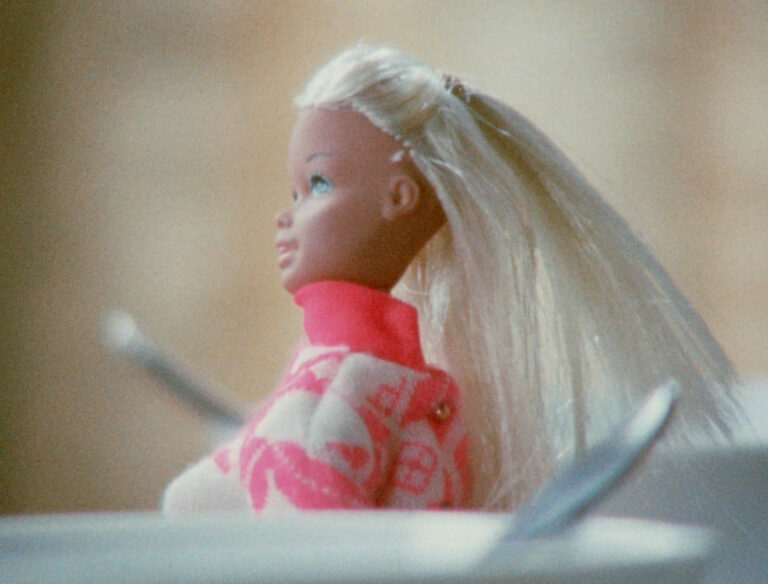
Shut Up Barbie (1974) by Vincent Grenier
Shut Up Barbie has rarely been shown and is a “rediscovered” film, so to speak. The film is the filmmaker’s reaction to the obsession a seven year old girl has with her Barbie Dolls. The film builds on the dolls’ referential content and limits. While innocuous at first, the humor eventually becomes rather unsettling and tragic. Ann Knutson plays the role of the mother Barbie Doll. (Vincent Grenier)
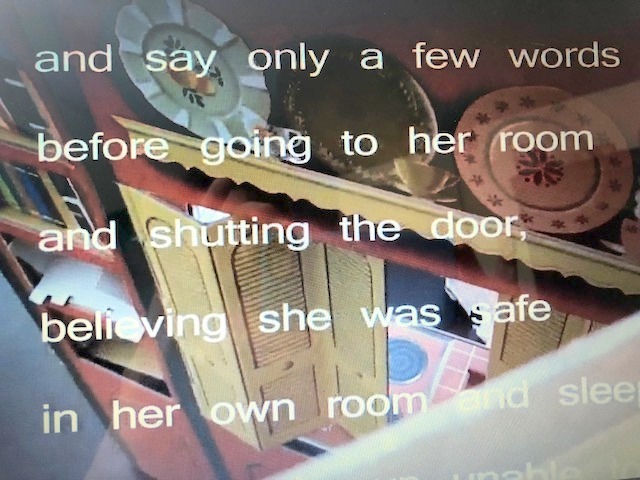
Barbie Dream House (2018) by Susan Kouguell
The pacing and the word play, along with the vertical density and retrograde effect, are intended to actively engage the viewer as the speaker of this text; a character who is grasping to retain fragments of memory and thought that are at the risk of being smothered in trauma. The 1960s era cardboard Barbie dollhouse reflects the specific conditioning of girls and how generations later these stories have stayed the same and how they are now being challenged. When these walls talked. (Susan Kouguell)
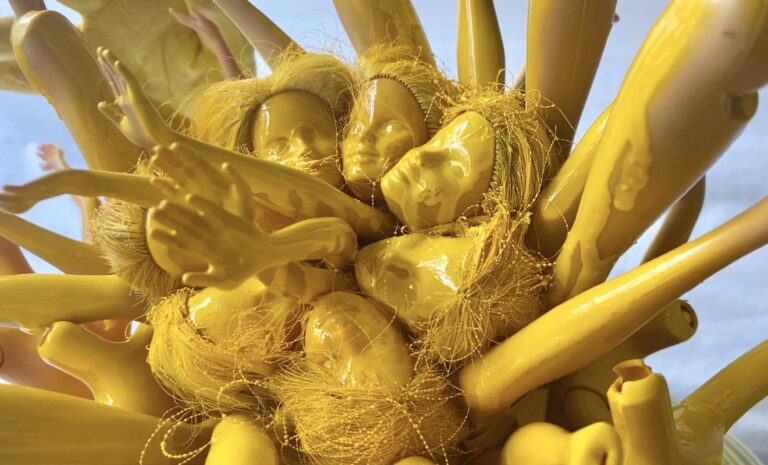
I’ve Never Had an Asian Barbie (2020) by Jessy Jiao
Approximately 80% of all toys produced worldwide are made in China. In Chinese toy factories, 90% of workers are females. The female workers are paid wages of $300 or less per month for 174 hours of work. The workers make toys such as Barbie, Thomas the Tank Engine and Hot Wheels. These products are sold by Mattel, Disney, Walmart and other large American companies. The world of toys may be heaven for children, but it is a world of misery for toy factory workers. I hope to inform people who take privileges for granted about where the dolls are from, who made them and what kind of life those workers are living. (Jessy Jiao)
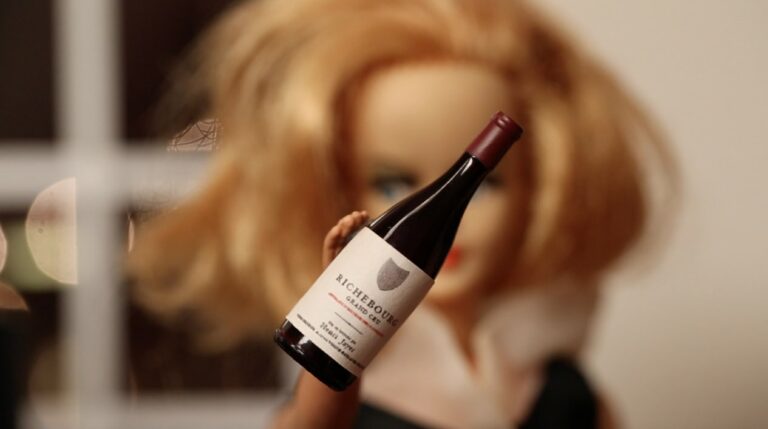
Meryl Fuckin Streep (2017) by Ava Bogle
For two young screenwriters, a movie pitch takes a turn into the surreal. (Ava Bogle)
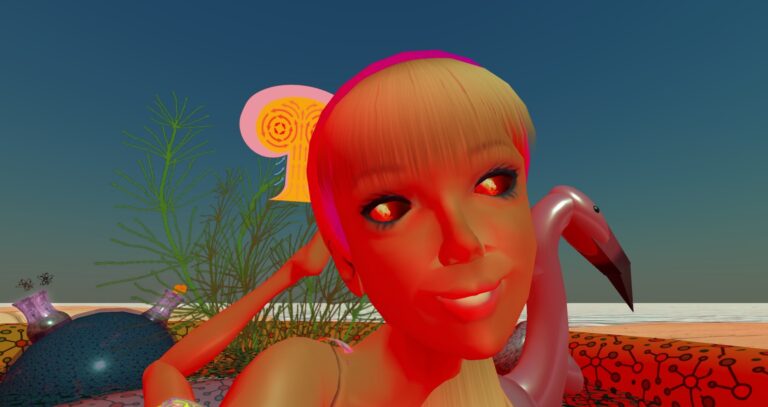
Barbiemageddon (2023) by Penumbra Carter
Barbie exhibits the power residing within her, while floating in her Atomic Pool. (Penumbra Carter)
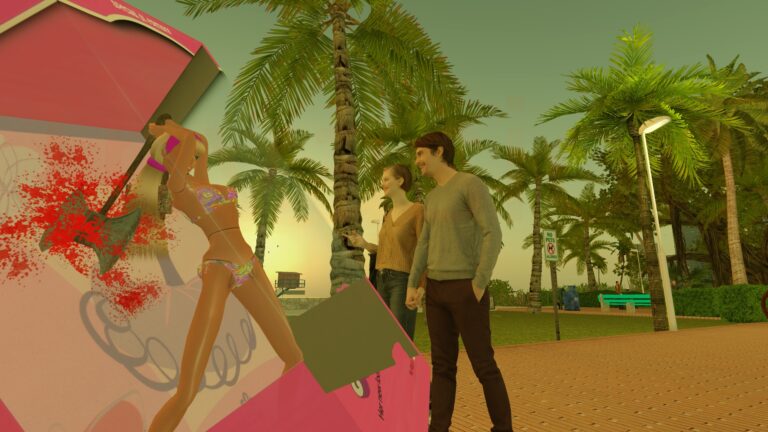
Invasion (2021) by Penumbra Carter
There seem to be a lot more Real-Life looking people invading Second Life, but they are frozen in some kind of interdimensional field of cross over realities, unable to move. Barbie takes an axe to them, in protest to their invasion of virtual space. (Penumbra Carter)
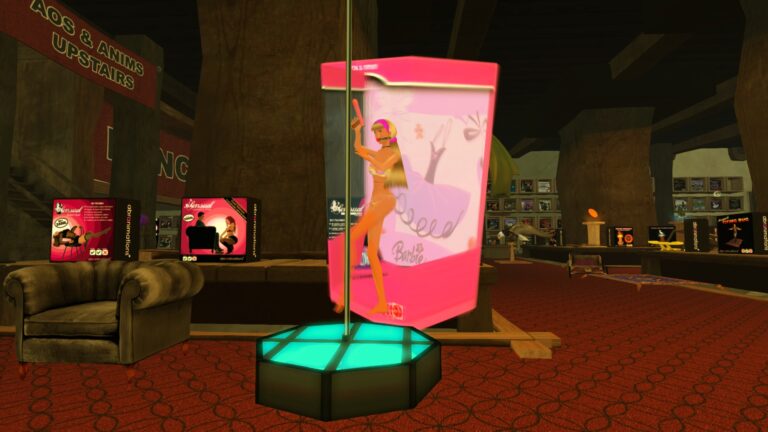
Out and about with Barbie (2021) by Penumbra Carter
Barbie having some fun; in and out of her box. (Penumbra Carter)
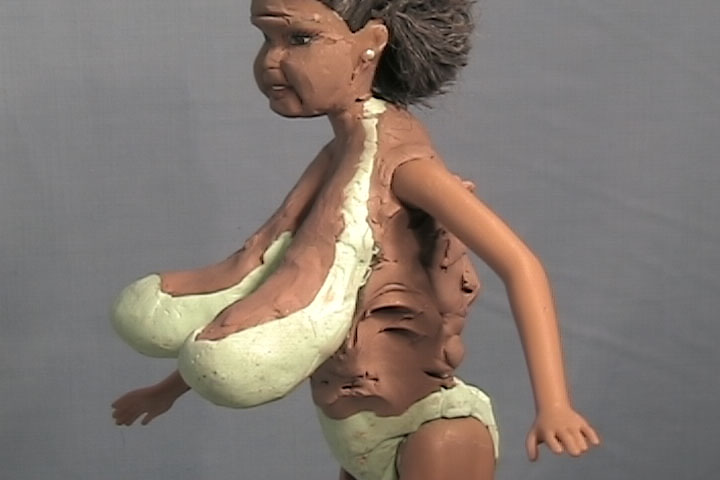
Big Gurl (2006) by Lauren Kelley
In Big Gurl, various shades of Barbie-like dolls are brought to life with clay to form malleable characters that navigate viewers through mundane situations that occur in public restroom stalls and behind fast food kitchen counters. An earthy narrator is employed to lead a cast of inert beings through various vignettes about the durable nature and limits of human strength. (Lauren Kelley)
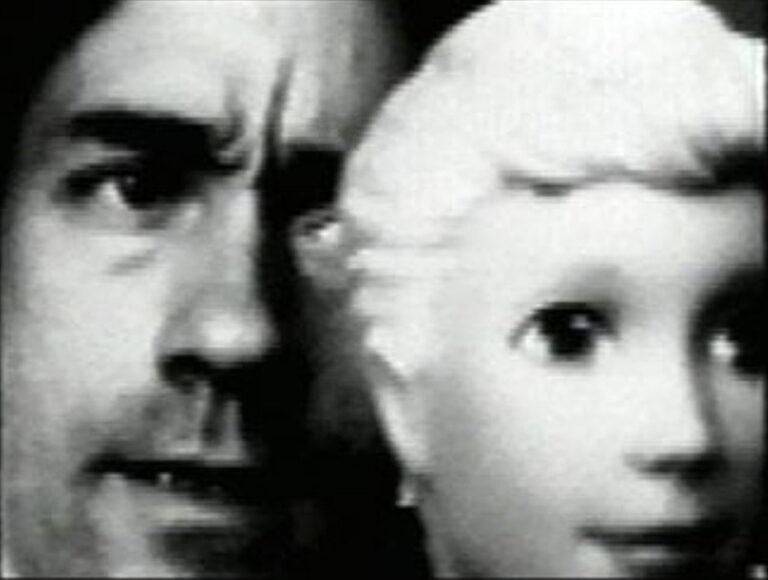
Barbie’s Audition (1995) by Joe Gibbons
Barbie’s Audition is a hilarious bit of throwaway sleaze: Gibbons tries to get the meat-puppet substitute to spend some time on the casting couch. (Amy Taubin, The Village Voice)
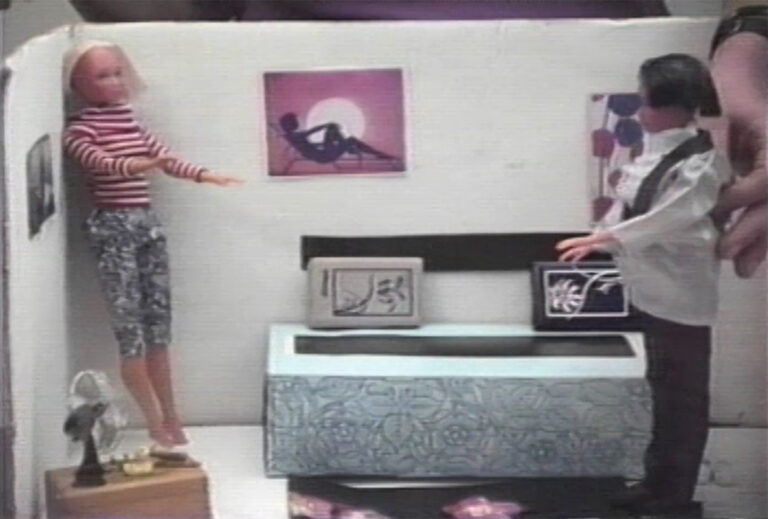
Erotica (1989) by Lucretia Knapp
Two lesbians. A first date. (Lucretia Knapp)
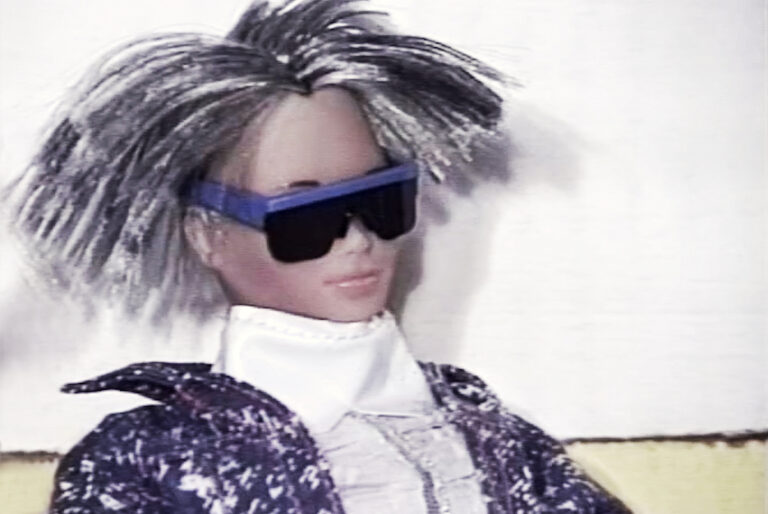
Sally Cheesey Raffelyell (1992) by Lucretia Knapp
Two lesbian filmmakers appear on a talk show with a clueless host but fabulous audience. Jo-Anne, one of the filmmakers, voiced by Lucretia, was “Weird Barbie” before there was a blockbuster. (Lucretia Knapp)
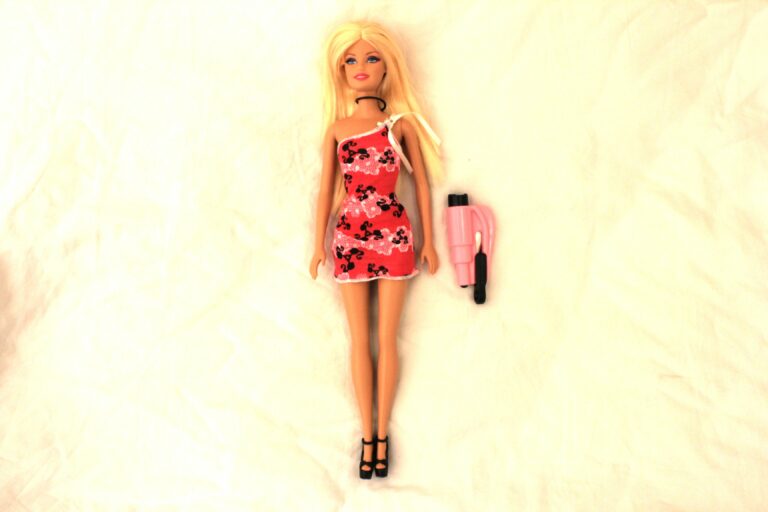
PRISM Break Barbie (2013) by Addie Wagenknecht
PRISM Break Barbie is a solution for girls who want to protect their data beyond just encryption. The Barbie is equipped with a 3” and .6oz. concealed spring-loaded spike which can be activated by hand or by sitting the doll on a USB or SSD drive. The spike’s force when triggered will shatter hardware. (Addie Wagenknecht)
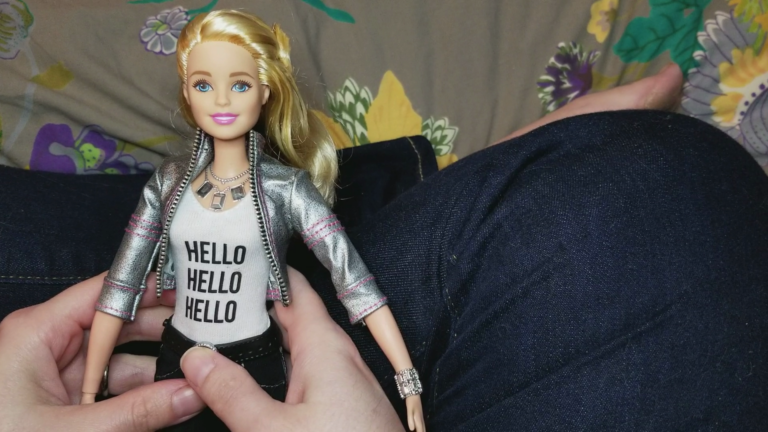
Hello Barbie: The First Dispatch (2020) by Faith Holland
Hello Barbie tests the limits of Mattel’s first AI Barbie that was launched as part of a growing trend of AI toys in 2015. Barbie can converse with her owner and generate tailored statements. She remembers everything you tell her and can recall this information in future conversations. Unlike friends who you have to say goodbye to at the end of the day, you can take Barbie to bed with you and talk to her until you fall asleep. The potential for constant contact and lack of regular social contexts expedites trust building. (Faith Holland)
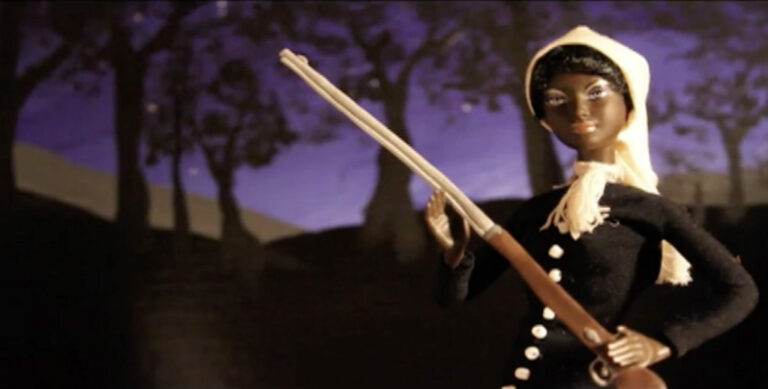
Black Moses Barbie (Harriet Tubman Commercial) (2011) by Pierre Bennu
This mock commercial for a “Black Moses Barbie” toy celebrating the legacy of Harriet Tubman seeks to deconstruct and re-envision images of people of color in commercial and pop culture, and reexamine the messages transmitted through the communicative tools of childhood. In this piece, the inspiring legacy of Harriet Tubman the historical figure, is translated into a mock ad in order to examine and interrogate the gendered construction and marketing of heroism, violence and play. (Pierre Bennu)

Burka Barbie (2014) by Narcissister
As an African-American female of mixed heritage including Jewish-Moroccan ancestry, Narcissister’s performance video ultimately magnifies the shifting parameters of feminist diasporic consciousness around the female body and its objectification. As with her characteristic mask, Burka Barbie highlights femininity as always and only performative[…]. Bursting old paradigms that frame the female as the Dark Continent/Other and Muslim culture as “Axis of Evil,” Burka Barbie as fashion renegade explores the female body itself as a type of terrorism operating against global patriarchal authority.
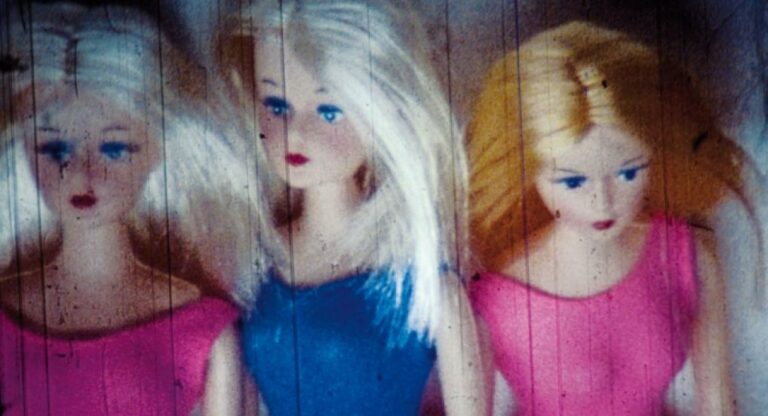
23 Barbiepuppen kippen um (23 Barbie Dolls Tip Over) (1988) by Dagie Brundert & Gesine Jochems
23 Barbies in a row. Snatched from a sale table in Woolworths and lined up against a wall in their bathing suits. One by one they fall accompanied by a cacophony of humming. Dramatic. Dryly funny. Made in West Germany at the time of the DDR. (Dagie Brundert & Gesine Jochems)
Vincent Grenier (1948–2023) was a native of Quebec City, Canada. In the early ‘70s he began to make films in San Francisco where he worked as the programmer for San Francisco Cinematheque. After moving to New York City he was a frequent contributor to the Montréal art scene of the ‘70s and ‘80s. He received a Guggenheim Foundation Fellowship in 2010 and the Stan Brakhage Vision Award in 2019.
Susan Kouguell is an award-winning writer and filmmaker based in New York City. Kouguell’s experimental shorts won many international prizes, are in the MOMA archives and permanent collection and have been screened in the Whitney Biennial.
Jessy Jiao is a writer and multimedia artist from China who graduated from VCU Arts. She tends to use psychological methods to project her experience, observations and thoughts into her artworks, aiming to create authentic and complex East Asian female characters and to explore their struggles in the Western world.
Ava Bogle is a writer, solo performer and filmmaker. Her film Meryl Fuckin Streep won Best Short Film at SF Indie Fest and Best Experimental Film at Lady Filmmakers Festival. Her one-woman show The Pleasure Project, about five aliens who believe the clitoris can save humanity, toured the US and Australia to critical acclaim. Bogle seeks to create irreverent, cathartic and surprising work. Ever since she was a child alone in her bedroom, Barbie has been one of her favorite collaborators.
Since 2007, Elizabeth Holmes has been making machinima—the use of real-time computer graphics engines to create a cinematic production—in Second Life. Her avatar name is Penumbra Carter. She uses Second Life as a medium, a material to create art using a virtual reality.
Lauren Kelley is an interdisciplinary artist who employs a wry wit when commenting on matters of innocence, race and girlhood. At the core of her practice is a series of short, stop-motion animated videos that combine clay-mation with her brown, plastic dolls. Stylistically evocative of children’s television programs of her youth, Kelley stages absurd, jittery, sometimes endearing narratives. For Kelley, dolls are a vehicle for navigating the space between luxuries and necessities; sweet and unsavory sentiments; Black and non-black worlds.
Joe Gibbons is a singular figure in the history of American experimental cinema. He is widely regarded for the incomparable, dryly humorous works that he began making in the mid-1970s. At the time, Gibbons was considered a pioneer of Super-8 filmmaking but left this intimate home movie format behind in the late 1980s to work in 16mm and video, including Pixelvision which is used in Barbie’s Audition.
Lucretia Knapp is a writer, film and video artist whose work challenges traditional cinematic form. Experimentation is a critical part of her practice, and an investigation of the malleability of the digital medium. She is interested in how we see and show ourselves, how we occupy time and space and how being present can bring a change. Lucretia has been creating work that involves the communities she has found and is a part of.
Addie Wagenknecht‘s work blends conceptual art with forms of hacking and gestural abstraction. Previous exhibitions include Centre Pompidou, Whitechapel Gallery and The New Museum, among others. She has collaborated with CERN, the Whitney Museum of American Art and Google’s Art Machine Intelligence (AMI) Group. She holds a Masters degree from the Interactive Telecommunications Program at New York University.
Faith Holland is an artist whose multimedia practice focuses on gender, intimacy and technology. In works that exaggerate our physical and embodied relationships to technologies, Holland uses equal measures of humor and tenderness in sculpture, performance, video, animated gifs and net art works.
Pierre Bennu is a multimedia artist working in paint, sculpture, animation, film, digital video, sound art, puppetry and performance. His work explores themes of resilience, nature, self-love, wellness and intergenerational legacies of creativity, black joy and liberation. Bennu is the principal creative of exittheapple, an alternative media and arts company. As a multi-hyphenate, his work often blurs lines between genres, crossing boundaries and interrogating silos of creativity.
Narcissister is a Brooklyn-based artist and performer. Masked and merkin-ed, she works at the intersection of dance, art and activism in a range of media including live performance, film, video, collage and sculpture. She presents work worldwide at festivals, nightclubs, museums and galleries. Awards include “Best Use of a Sex Toy” at Good Vibrations Erotic Film Festival, among others. Always Interested in troubling the popular entertainment/experimental art divide, she appeared on America’s Got Talent in 2011.
Dagie Brundert (b. 1962, Germany) received an education in visual arts and experimental film in Berlin. As a filmmaker she makes mainly Super-8 films.